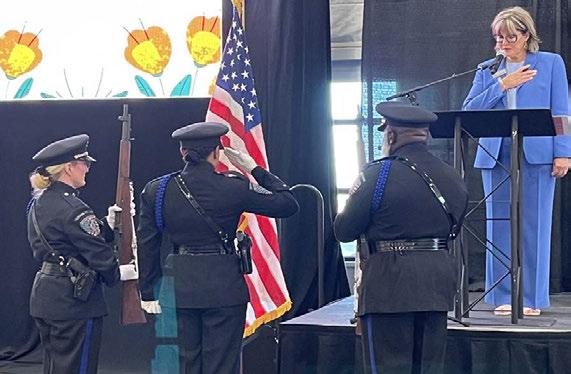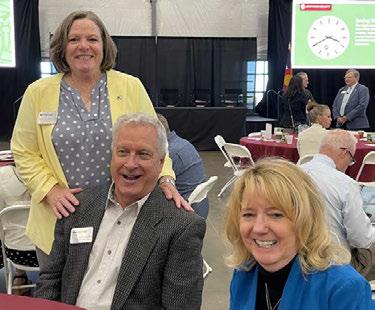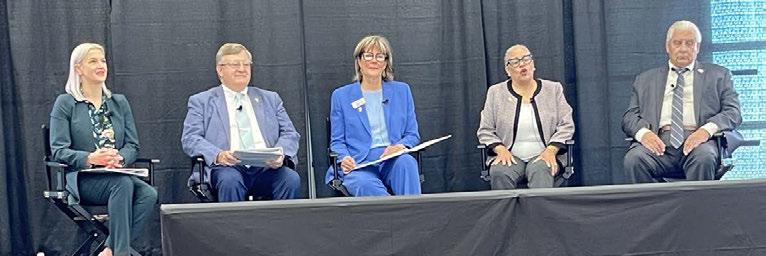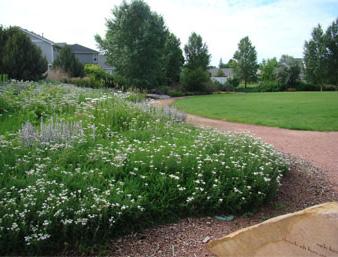
3 minute read
State of the County
from 6-15-23 Villager
by The Villager
Continued from page 3 large county to have done so in all 12 months of 2022.
She pointed to the ARPA funds used for emergency rental assistance that kept over 3,800 families in their homes who would have otherwise faced potential eviction, along with $12 million in ARPA funds used for, “critical relief to 367 businesses to keep them in storefronts and support local economic recovery.”
So as to support making housing more attainable, Summey said, Arapahoe County, “Updated (its) land development code to reduce planning application fees for affordable housing projects, permit smaller residential unit sizes, and allow accessory dwelling units (ADUs) in most residential districts.”
Warren-Gully talked about Generational Opportunities to Achieve Long Term Success (GOALS), “a four-to-nine month structured residential program for families seeking to gain and enhance the skills and resources needed to achieve economic self-sufficiency,” to bring them from homelessness to economic and housing security.
Projects include an under-construction $2 million early childhood education center in Aurora for clients in that residential program and in the surrounding areas. The county has also committed $1.2 million to another early childhood center on the Oxford Vista campus in Englewood, home of the GOALS program.
These two projects, as well as the Ready to Work Center in Englewood, also part of the county’s “homelessness toolbox,” have all been funded with ARPA dollars. Ready to Work’s Aurora and Boulder locations, Warren-Gully shared, “have a high graduation rate to mainstream employment and housing, as well as an 85 percent, one-year retention rate.”
The County has also partnered with four of its cities that are committed to addressing the homelessness population—Centennial, Englewood, Littleton, and Sheridan—to form the Homelessness Coordinating Committee “to fund dedicated staff to support municipal needs (addressing homelessness) under the county umbrella.” She emphasized, “But for these one- time federal ARPA funds, the county would be unable to convene the committee and coordinate this important work.”
Other projects in the County to support residents struggling with emotional and mental issues include a planned new Crisis and Acute Care Center at Aurora Mental Health and Recovery, to which the BOCC has pledged $5 million in ARPA funds.
Commissioner Campbell-Swanson talked about the diverse housing types within the County, “From dense suburban areas with apartments and townhomes, to establish neighborhoods and transit-oriented development,” noting that there are 108,500 units in the pipeline,
“Ready to be built in Arapahoe County today.” Still, she pointed out, “One in three of our residents pays more than 30% of their income” for housing and half are spending morea than 50% of their income for housing.
To ease the pressure, she explained, the County plans to amend its land development code to “support more affordable housing options,” by Establishing mixed-use and multi-family zone districts; Streamlining the planned unit development process for affordable housing projects; Creating incentives for afford- able housing in transit-oriented development; Expanding the use of modular and manufactured homes. Without specifically mentioning SB23-213, the land use proposal that failed in the legislature this year, Campbell-Swanson said, “We appreciate the state’s focus on these connected pieces and look forward to working with our legislative and city partners to identify meaningful solutions that further outcomes towards our shared goal of affordability and smart growth.”
Pointing to the ARPA-funded 37 new beds for medical and behavioral observation being built at the Arapahoe County Jail, Campbell-Swanson noted that the detention center, “is the largest mental health provider in the county,” along with being, “one of the most glaring examples of the county’s aging infrastructure needs.”
Finally, she talked about the county’s “$500 million backlog in deferred maintenance and capital projects” related to its roads and bridges, repeating the theme that, “The County’s current revenue stream can’t address this backlog -- we need to find new ways to address these critical projects.”
Commissioner Bill Holen noted that the County maintains two veterans’ services offices, in Littleton and Aurora, with help from Adams County and the City of Aurora. Arapahoe County has the second largest concentration of military veterans in the state thus each of its officers serve over 12,000 veterans, resulting in a seven-week backlog, since the County receives only $30,000 from the State of Colorado to support this operation.
Commissioners Summey and Campbell-Swanson also shared about current projects funded by the County’s one-fourth of one percent Open Spaces Sales Tax.


The just-opened, newly reno- vated 4.6-acre Cheyenne-Arapaho Park at 9200 E. Iowa Avenue includes a new community garden built in partnership with Denver Urban Gardens, picnic shelters, Native American-Inspired artwork, a community shade shelter, and a play area for children, Summey said. This was a $2.7 million oneyear project of the Open Spaces Sales Tax. fmiklin.villager@gmail.com

An $18-million improvement plan for Dove Valley Regional Park is currently underway, to be completed next year, that will include, “New athletic field upgrades, new street access, additional parking, a new shade pavilion and new multi-use community lawn, along with a dog park and skate park on the 40 acres to the east of the existing ball fields. A second phase of the project is planned that will include a lighted championship field with artificial turf, builtin seating and shade structure, restrooms and a concession building and additional youth fields,” Campbell-Swanson told the crowd.








